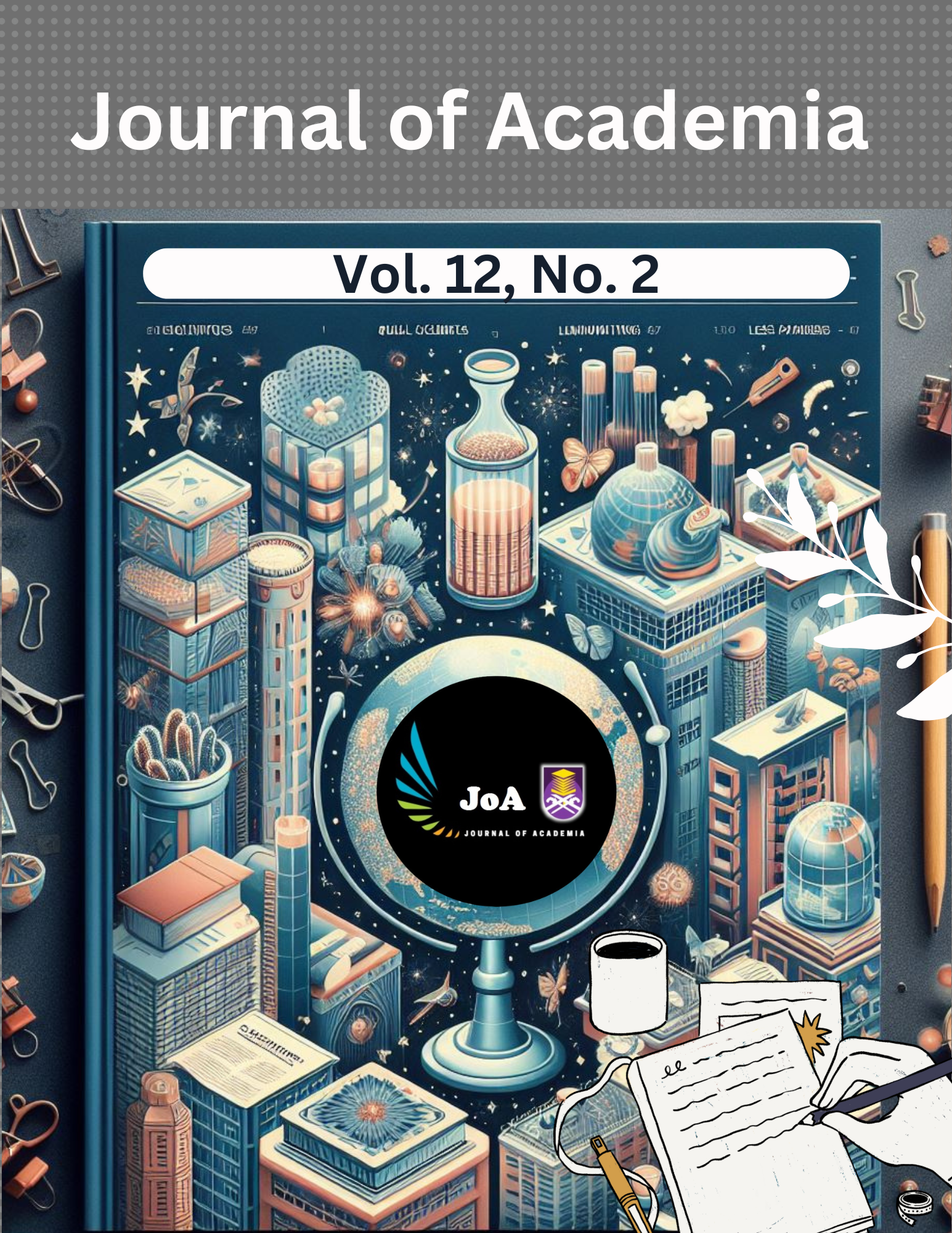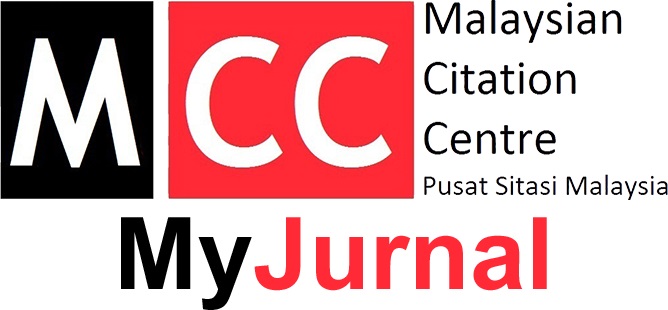THE COMPARISON OF Onthophagus sp. (COLEOPTERA: SCARABAEIDAE) DEVELOPMENT IN FOREST AND RUBBER PLANTATION IN NEGERI SEMBILAN
Keywords:
Onthophagus sp., pitfall trap, development, forest, rubber plantationsAbstract
Dung beetles are a valuable taxon to research disturbance due to their superiority as bioindicators of habitat quality and environmental change. They also have a significant impact on basic ecological processes such soil aeration, decomposition, nutrient recycling, secondary seed distribution, and suppression of vertebrate parasites. Although there is a growing body of knowledge regarding how species react to disturbances, studies on development seldom consider. This study aimed to determine and compare the development of Onthophagus sp. at UiTM Cawangan Negeri Sembilan forest (UiTM forest) and rubber plantation Kg. Beting, Negeri Sembilan. A total of 10 baited pitfall traps were installed systematically and left overnight for four days per sampling session, over a period of two weeks. Subsequently, the trapped samples were collected, preserved, and identified. Morphometric measurement was conducted on head width (mm) and body length (mm) and the development calculation refers to the formula: head width/ body length. The research findings indicated that O. breviconus demonstrated the greatest developmental rate range (0.0556mm) within the UiTM forest, whereas O. proletarius showcased the highest developmental rate range (0.1328mm) within the forest environment. Conversely, the O. batesi displayed the lowest rates range (0.0138mm) in UiTM forest while O. patenensis (0.0033mm) showed the lowest developmental rate range in rubber plantation. A higher development rate signifies faster growth and maturation compared to other individuals or species within the population. These findings provide valuable data for further Onthophagus sp. studies and serves as a guideline for future research and conservation efforts in Malaysia.
References
Abdullah, N. H., & Azmir, I. A. (2021). A pictorial key for the identification of beetle (Order: Coleoptera) and diversity study in selected area within pelangai forest reserve, Negeri Sembilan, Malaysia. Biodiversitas, 22(2), 947–955.
Abebe A., Teketay, D., & Mehlhorn, R. (2018). Abundance and diversity of dung beetles (Coleoptera: Scarabaeidae: Scarabaeinae) in relation to abiotic factors in the Bale Mountains, Ethiopia. Journal of Threatened Taxa, 10(11), 21084–21092.
Alves, V. M., Giehl, E. L. H., Lovato, P. E., Vaz-de-Mello, F. Z., Agudelo, M. B., & Hernández, M. I. M. (2020). Dung beetles and the conservation of diversity in an agricultural landscape with maize fields and Atlantic Forest remnants. Acta Oecologica, 107, 103598.
Audino, L. D., Murphy, S. J., Zambaldi, L., Louzada, J., & Comita, L. S. (2017). Drivers of Community Assembly in tropical forest restoration sites: Role of local environment, landscape, and space. Ecological Applications, 27(6), 1731–1745.
Costa, M. K., França, F. M., Brocardo, C. R., & Fadini, R. F. (2022). Edge effects from exotic tree plantations and environmental context drive dung beetle assemblages within Amazonian undisturbed forests. Forest Ecology and Management, 520, 120277.
Creedy, T. J., & Mann, D. J. (2011). Identification guide to the Scarabaeinae dung beetles of Cusuco National Park, Honduras. Operation Wallacea, Conservation research through academic partnership, Lincolnshire, United Kingdom, 1, 12–50.
Davis, A.L.V., & Sutton, S.L. (2019). Habitat variables as predictors of dung beetle diversity in a tropical dry forest. Journal of Insect Conservation, 23(1), 21–30.
Din, A. M. M., Halim, W. M. A., Ahmad, S. Z. S., & Yaakop, S. (2019). Dung beetles (Coleoptera: Scarabaeidae) composition to three different ecosystem functions: A study case in Malaysia. Tropical Life Sciences Research, 30(3), 69–82.
Douan, B. G., Doh, F., Danon, A. S. D., Beugre, N. I., Touré, D. S., Guinagui, N. B., & Doumbia, M. (2022). Efficiency of four types of beetles traps in rubber plantation in the Southern of Côte d’Ivoire. International Journal of Biological and Chemical Sciences, 15(6), 2426–2437.
Edwards, F. A., Finan, J., Graham, L. K., Larsen, T. H., Wilcove, D. S., Hsu, W. W., Chey, V., & Hamer, K. C. (2017). The impact of logging roads on dung beetle assemblages in a tropical rainforest reserve. Biological Conservation, 205, 85–92.
Filgueiras, B. K., Iannuzzi, L., & Leal, I. R. (2011). Habitat fragmentation alters the structure of dung beetle communities in the Atlantic Forest. Biological Conservation, 144(1), 362–369.
França, F. M., Frazão, F. S., Korasaki, V., Louzada, J., & Barlow, J. (2017). Identifying thresholds of logging intensity on dung beetle communities to improve the sustainable management of Amazonian tropical forests. Biological Conservation, 216, 115–122.
Goh, T. G., & Hashim, R. (2019). Conservation of dung beetles (Scarabaeidae: Scarabaeinae) in Peninsular Malaysia. Journal of Wildlife and Parks, 34, 81–93.
Ibarra, J. T., Caviedes, J., Altamirano, T. A., Urra, R., Barreau, A., & Santana, F. (2021). Social-ecological filters drive the functional diversity of beetles in homegardens of campesinos and migrants in the southern Andes. Scientific reports, 11(1), 12462.
Salomão, R. P., Lopera-Toro, A., Pulido-Herrera, L. A., & Arias-Buriticá, J. A. (2023). Habitat type affects the diversity of dung beetle (Coleoptera: Scarabaeidae) assemblages in a Neotropical mountainous region of Colombia. International Journal of Tropical Insect Science, 43(3), 793–803.
Salomão, R. P., Pires, D. de, Baccaro, F. B., Schietti, J., Vaz-de-Mello, F. Z., Lima, A. P., & Magnusson, W. E. (2022). Water table level and soil texture are important drivers of dung beetle diversity in Amazonian lowland forests. Applied Soil Ecology, 170, 104260.
Sousa, W. O., Sousa, L. E., Da Silva, F. R. J., Da Graça Santos, W. I., & Aranda, R. (2019). Composition and structure of the frugivorous butterfly community (Lepidoptera: Nymphalidae) at the Serra Azul State Park (PESA), Mato Grosso, Brazil. Zoologia (Curitiba), 36, 1–10.
Souza, T. B., França, F. M., Barlow, J., Dodonov, P., Santos, J. S., Faria, D., & Baumgarten, J. E. (2020). The relative influence of different landscape attributes on dung beetle communities in the Brazilian Atlantic Forest. Ecological Indicators, 117, 106534.
Tavares, A., Beiroz, W., Fialho, A., Frazão, F., Macedo, R., Louzada, J., & Audino, L. (2019). Eucalyptus plantations as hybrid ecosystems: Implications for species conservation in the Brazilian Atlantic Forest. Forest Ecology and Management, 433, 131–139.
Vieira, L., Sobral-Souza, T., Spector, S., Vaz-de-Mello, F. Z., Costa, C. M., & Louzada, J. (2022). Synergistic effects of climate and human-induced landscape changes on the spatial distribution of an endangered dung beetle. Journal of Insect Conservation, 26(2), 315–326.
White, R. E. (2007). Peterson field guides for beetles. Houghton Mifflin.
Woodcock, B. A. (2005). Pitfall trapping in ecological studies. Insect sampling in forest ecosystems, 37–57.
Zakaria, S. S., Zaidi, N., & Ramli, N. H. (2022). Diversity and abundance of Onthophagus sp. (Coleoptera: Scarabaeidae) in Kg. Beting’s oil palm plantation and UiTM Cawangan Negeri Sembilan Forest, Malaysia. Journal Serangga, 27(3), 172–186.
Downloads
Published
Issue
Section
License
Copyright (c) 2024 Journal of Academia

This work is licensed under a Creative Commons Attribution-NonCommercial-NoDerivatives 4.0 International License.












